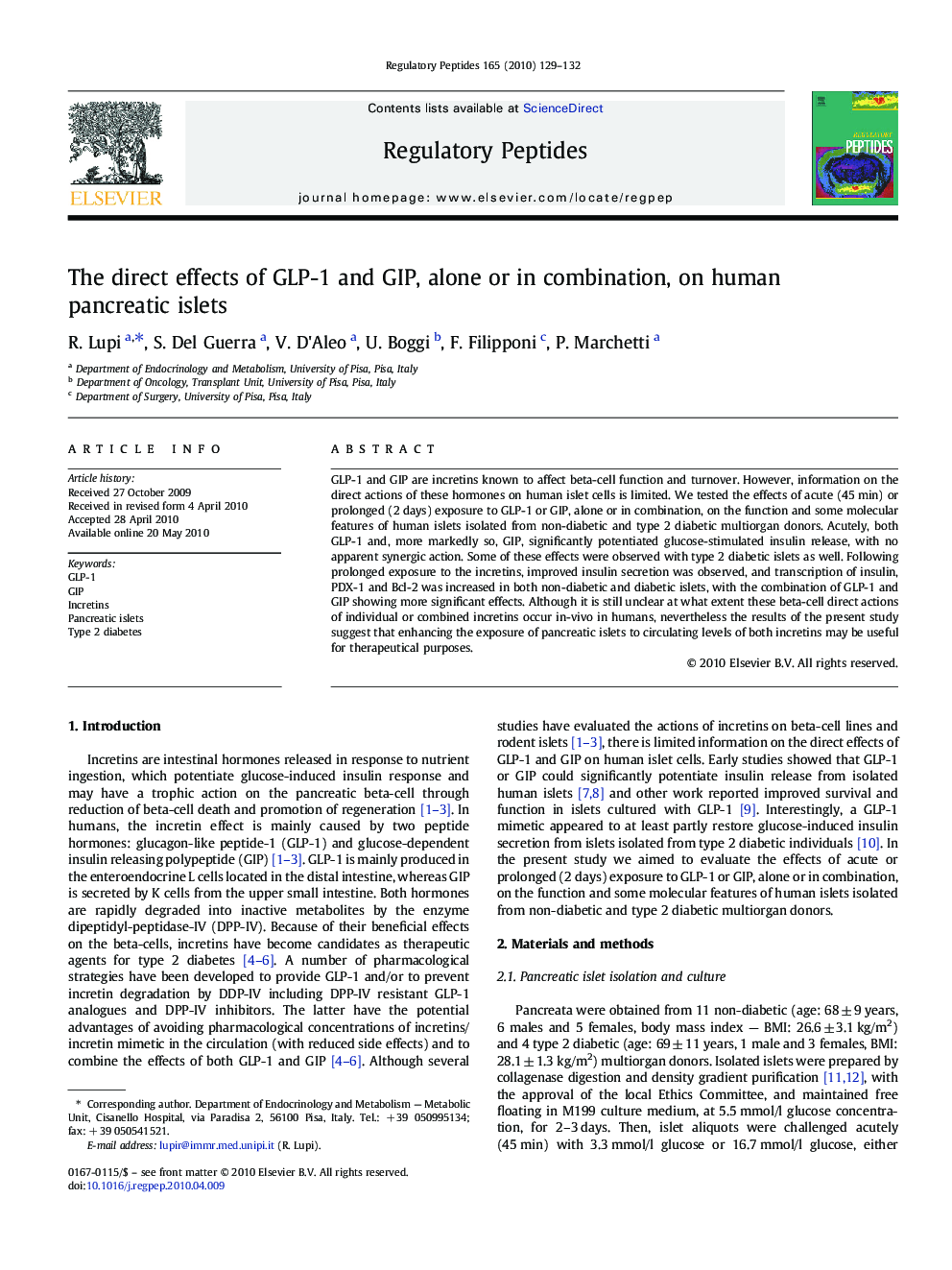| Article ID | Journal | Published Year | Pages | File Type |
|---|---|---|---|---|
| 2022665 | Regulatory Peptides | 2010 | 4 Pages |
GLP-1 and GIP are incretins known to affect beta-cell function and turnover. However, information on the direct actions of these hormones on human islet cells is limited. We tested the effects of acute (45 min) or prolonged (2 days) exposure to GLP-1 or GIP, alone or in combination, on the function and some molecular features of human islets isolated from non-diabetic and type 2 diabetic multiorgan donors. Acutely, both GLP-1 and, more markedly so, GIP, significantly potentiated glucose-stimulated insulin release, with no apparent synergic action. Some of these effects were observed with type 2 diabetic islets as well. Following prolonged exposure to the incretins, improved insulin secretion was observed, and transcription of insulin, PDX-1 and Bcl-2 was increased in both non-diabetic and diabetic islets, with the combination of GLP-1 and GIP showing more significant effects. Although it is still unclear at what extent these beta-cell direct actions of individual or combined incretins occur in-vivo in humans, nevertheless the results of the present study suggest that enhancing the exposure of pancreatic islets to circulating levels of both incretins may be useful for therapeutical purposes.
